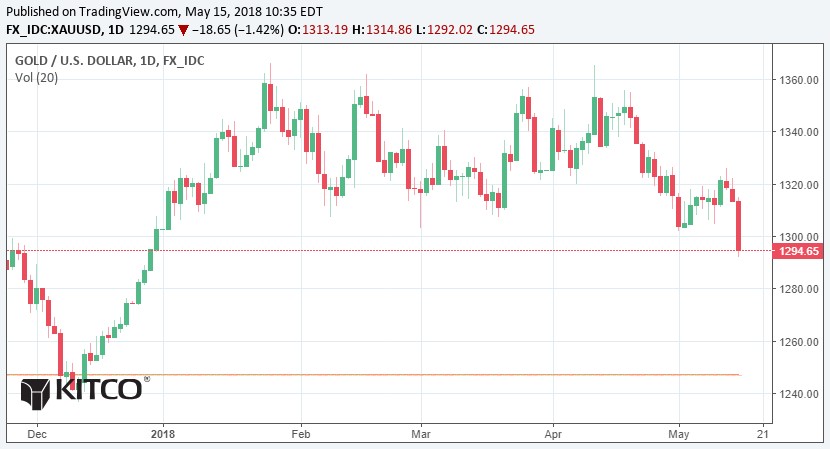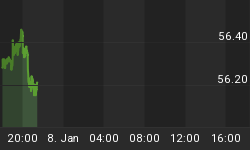Gold has been a clear outlier in the commodities market not only in the current year but also over the past 12 months. Gold is up a mere 3.1 percent over the past year compared to a 13-percent gain by the CRB (Commodity Research Bureau) Index. Of course, the fact that oil is up 53 percent over the period has helped the index some.
On Tuesday, May 15, gold fell below its critical support of $1,300 per ounce and has been struggling to regain its footing.
Government borrowing costs continue to grind higher with 10-year Treasuries recently broke through 3.1 percent, the highest level since July 2011. Meanwhile, the two-year also notched a multi-year high of 2.593 percent, the highest level since August 2008.
June gold futures last traded at $1,294, nearly 2 percent down on the day. At this point, the investors' mantra of buying low and selling high might seem to aptly apply to gold.
Or does it?

(Click to enlarge)
Source: Kitco
Gold, Short-Term
Higher oil prices and generally rising inflation increase the probability that the Fed will be forced to hike rates to keep inflation in check, and even steeper rate hikes in the future are not out of the cards.
Geopolitical risks have been around for quite some time and seem to be fully baked into gold prices at this point.
Over the short-term, the gold outlook doesn't look good. Rising bond rates mean that a June rate hike is almost a certainty, and gold prices could move lower. Although the market looks oversold, the yellow metal seems unable to withstand the threat of rising interest rates--something that could push it even lower.
Gold, Long-Term
Meanwhile, real interest rates in turn are gradually climbing, which doesn't augur well for long-term gold prices, either. Related: The Royal Wedding Could Bring Billions Into The UK
The Golden Dilemma by Claude Erb and Campbell Harvey says real interest rates (nominal rates adjusted for inflation) have a very strong negative correlation with gold, with the correlation averaging a -0.82 from 1997-2012 (-1 is perfect negative correlation).
Higher interest rates make non-interest bearing assets like gold less attractive investments.
Even more alarming is the find that the relationship between gold and real interest rates is not linear, and gold prices only tend to increase significantly during periods of negative interest rates.
Once inflation rates exceed nominal interest rates, investors tend to shift their capital to gold leading to higher gold prices. Unless inflation rates climb faster than bond yields (a highly unlikely scenario given the Fed's dual mandate), it's hard seeing real interest rates slipping into negative territory and favoring gold.
Reason to Hope
But does that mean that gold prices are condemned to stay put for maybe another decade or so? Hopefully, maybe not.
There are still a couple of factors that can still give gold longs hope.
First off, we might be at peak gold supply, or rapidly approaching it.
Although the world's gold supply has climbed uninterrupted for nine years, demand has always outstripped supply with only scrap and above-ground inventories, both inconsistent sources, making up the difference. For example, production of $3,150 tonnes in 2017 was considerably lower than demand of 4108 tonnes, according to the World Gold Council.
By Alex Kimani for Safehaven.com
More Top Reads From Safehaven.com:

















